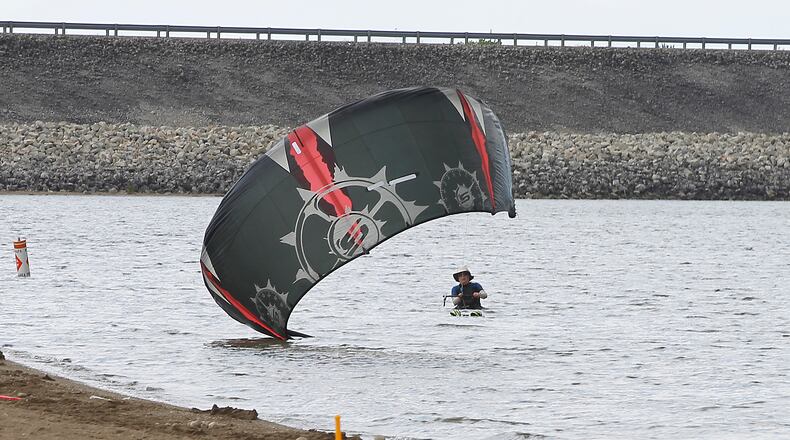I learned quickly how to think on my feet and communicate. This explains why even today when I get really wound up I revert to a southern accent.
To make a long story shorter, I managed to have a great two years there and the students I met as adults remember things like mapping the solar system in the soccer field, and categorizing the fossils in the school’s gravel drive way. We managed just fine with minimal resources, thank you. But oh I do wish I could have taken them on some real field trips.
Last month, just before school was out I had the opportunity to witness a remarkable field trip at Mad River Adventures. Seventh graders from Northwestern School District were there to release fish they had grown in their classroom.
When I arrived, I was immediately jealous. These lucky seventh graders were experiencing the dynamic field trip of my teacher dreams.
The brown trout were around 4 inches long, and when students carried them one at a time to the Mad River’s swiftly flowing current the fingerlings disappeared immediately into the current. They weren’t releasing Flipper, but from their faces I could see it was fun. After the release, the students were divided into three groups that traveled from activity to activity.
Clark County Soil and Water’s Jereme Best, and District Administrator Chris Simpson had a fantastic 3D model that demonstrated erosion and also how run off of nutrients, debris, and soil can mess up a river system. Students could follow the colored sugar trail through the plastic landscaped water way. Oh how I could have used this in my classroom. The students were fascinated by it and their questions demonstrated a good understanding.
Their teacher Tony Frabota took them on a hike to find different types of local flora and fauna. They learned how to identify intrusive non-native plants like honey suckle, garlic mustard, and wild parsnip among other plants. These are skills that are good to know.
The part that took my breath away was the demonstration by Sarah Hippensteel from the Miami Conservation District. She wanted to show the students what their brown trout fingerlings would encounter in the rapidly flowing currents of the Mad River. Using a seine, or finely woven net, she stood out in the current and let the water flow through the seine. Then she brought the net to shore and let the students examine what was caught in the net.
Even though we could see our feet through the clear water, the currents of the Mad River were carrying all sorts of interesting stuff besides crushed leaves and twigs.
The students identified mayfly nymphs, tiny crayfish or crawdads the size of a pinkie fingernail, crane fly larva, tadpoles, and numerous other tiny nymphs, worms, and larva that would soon be dinner for the brown trout and other fish in the river.
Hippensteel was impressed by the variety caught. She explained that these tiny animals were signs that the Mad River was very healthy, and actually the best she has seen it yet. She told the students that the Mad, Stillwater, and Miami rivers are some of the best natural streams in the United States and should be appreciated.
I couldn’t help but think about how wonderful it is that we have this phenomenal river running through our townships. How fortunate we are that our students can take field trips like this to get practical hands on learning. I’d love to see every school in our area teach our children to understand and protect this river.
Except for the canoe liveries and brief glimpses as we drive across bridges, the Mad River used to be kind of isolated from the people, but recent park expansions and improvements have made it more accessible.
Kayaks race along the current through Springfield on Buck Creek. Snyder Park gives us some great views of Buck Creek. More canoes travel the river. The Mad River Gorge is now open for hiking and climbing. Campgrounds sit along the banks.
These cool swiftly flowing river and creeks attracted our ancestors to Springfield. There was great water for drinking and to turn the water wheels of their mills. Now we return to our streams for recreation and tranquility. Out of town visitors to our creeks, river and reservoir bring tourist money to help our local economy.
Don’t let the tourists have all the fun. Get out and enjoy our streams this summer.
About the Author
